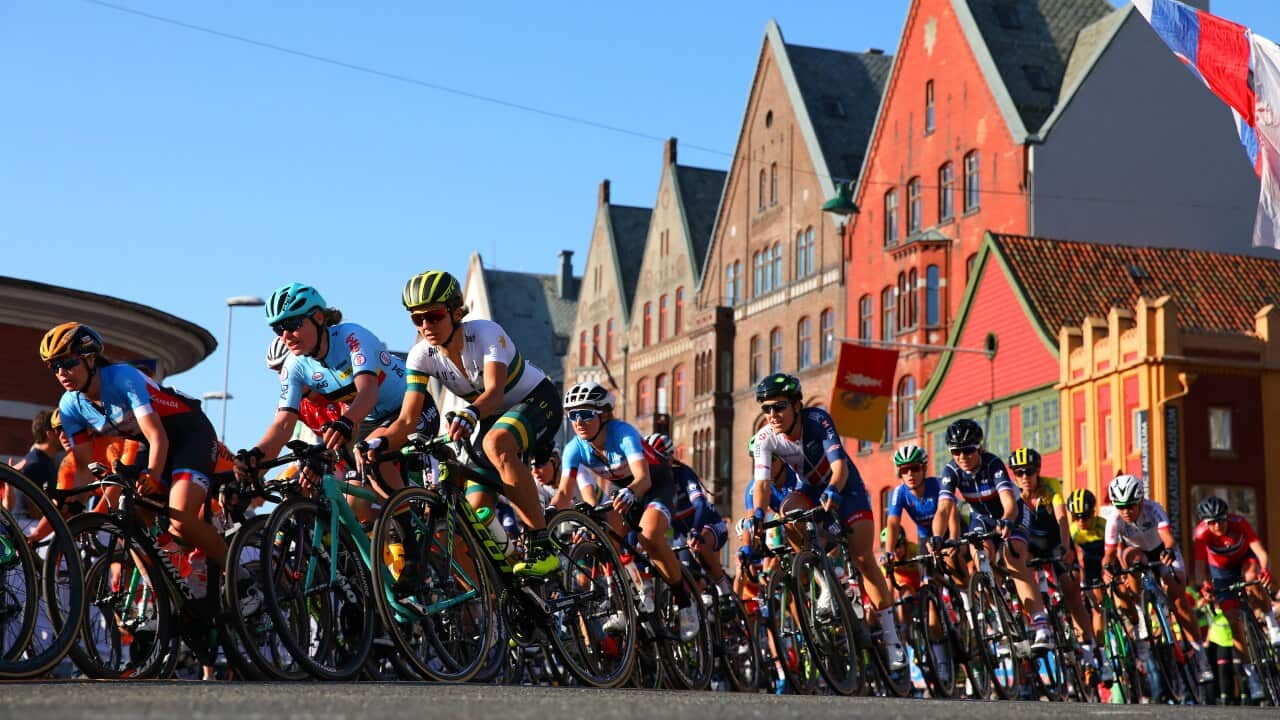We’ve already seen his (or her) handiwork at last year’s World Championships in Bergen, where the Mount Fløyen climb that so dramatically animated the men’s time trial was somehow completely left off the women’s race.
And then there’s his latest masterpiece in course design, the women’s Olympic road race route, which has been eviscerated of numerous race-defining elements that are present in the men’s course, including a spectacular and equally brutal ascent of the iconic Mount Fuji. This glaring omission drew agitated reactions from riders such as Marianne Vos, who lamented that “the signal that goes out from the different course types for men and women is not [one of] the equality the IOC aims for,” as well as Annemiek van Vleuten, who concluded that “this will make the race different, but not in a good way.”
This glaring omission drew agitated reactions from riders such as Marianne Vos, who lamented that “the signal that goes out from the different course types for men and women is not [one of] the equality the IOC aims for,” as well as Annemiek van Vleuten, who concluded that “this will make the race different, but not in a good way.”

Mount Fuji features as part of the men's Olympic road race course, but is absent from the women's parcours Source: SBS
At next week’s World Championships road race in Innsbruck, we’ll see the elite men take on an 85km-long opening passage, followed by six climbing laps and a brutal finishing circuit featuring the lactic acid-churning 28 per cent gradients of Höll-Anstieg, or “hell climb.” Taking a step down in the intensity stakes, the U23 men will race the same opening route, followed by only four climbing laps, with no infernal gradients to be seen.
Taking a step down in the intensity stakes, the U23 men will race the same opening route, followed by only four climbing laps, with no infernal gradients to be seen.

The men's World Championship Road Race course Source: UCI
And if we take the intensity down yet another notch, we have the elite women, who will race the same opening course as the U23 men and half the climbing laps of the elite men with, predictably, no hell climb in sight. Then there’s the race against the clock. The elite men will take on a lengthy route featuring a 5km-long climb to Gnadenwald that ramps up to 14 per cent in some sections. By contrast, the U23 men, as well as the junior men, will tackle a much shorter course that completely bypasses this steep Alpine ascent. This is also the course upon which the women will compete. Yes. The elite women will ride exactly the same route as the junior men, who are essentially amateur-ranked teenage cyclists.
Then there’s the race against the clock. The elite men will take on a lengthy route featuring a 5km-long climb to Gnadenwald that ramps up to 14 per cent in some sections. By contrast, the U23 men, as well as the junior men, will tackle a much shorter course that completely bypasses this steep Alpine ascent. This is also the course upon which the women will compete. Yes. The elite women will ride exactly the same route as the junior men, who are essentially amateur-ranked teenage cyclists.

The women's World Championship Road Race course Source: UCI
Following the social media armageddon that was precipitated by Cecilie Uttrup Ludwig’s critique of the World Championships parcours, the UCI released a statement which contended that despite its sincere desire to include the Höll climb in the elite women’s event, logistics and security concerns mandated that the road in question only be used on the final Sunday, i.e. for the men’s race.
However, on the morning of the women’s race, hundreds of cycling enthusiasts will, in fact, be able to take on the Höll climb as part of the “Ride to Höll” challenge. In light of this, it looks like the UCI may have some more explaining to do.
An iconic race such as the women’s World Championships deserves an equally iconic parcours. Yet next week in Innsbruck, a revenue-raising venture for the organisers has ultimately taken precedence over equal opportunity for the women’s peloton.
Comparisons between the men’s and women’s peloton admittedly do not always beget clarity within the increasingly contentious debate as to what true equality should look like in women’s cycling.
From an ideological perspective, it’s also entirely problematic to conceptualise women’s cycling as a derivative of the men’s sport, essentially as a mere variation on a theme. In this respect, it’s true that equality does not necessarily mandate that women and men always compete across the same parcours, or that we should incessantly compare and contrast every slight deviation between men’s and women’s race profiles. I’ve written before about the multitude of ways in which women’s and men’s cycling can, and should, be different and wholly unique entities.
There are also several varied and valid opinions as to what style of parcours constitutes the ideal race, with different types of terrain bringing out the best in different types of riders, be they sprinters, puncheurs or pure climbers, for instance. In this sense, a flatter race for the female peloton will not inevitably constitute an egregious manifestation of gender inequality that should immediately prompt a frantic sharpening of the pitchforks.
However, when the female peloton, as a matter of routine, is repeatedly and almost invariably given less challenging and iconic courses than their male counterparts, particularly at major races, the idea is clearly, and unfortunately quite publicly, being perpetuated that female riders are somehow incapable of handling anything more challenging.
It’s lamentable that on the world stage in Innsbruck, elite female riders are essentially being put on par with amateur-ranked teenage male cyclists.
The fact that the women’s route is 100km shorter than the men’s race is not the issue. In fact, it’s widely accepted that shorter races can encourage more tactical and compelling racing.
However, the mere watering down of women’s races, such as the events in Innsbruck, brings no such benefits, apart from protecting the fairer sex from their own ostensible inability to race competitively over gruelling terrain without overexerting themselves.
Stephanie Constand has worked as a press officer for several WorldTour cycling teams and race organisers. Originally working as a lawyer and in academia, she has written for many publications, both on cycling and a range of other topics, and is currently writing a book. She’s on Twitter at @stephconstand and online at


